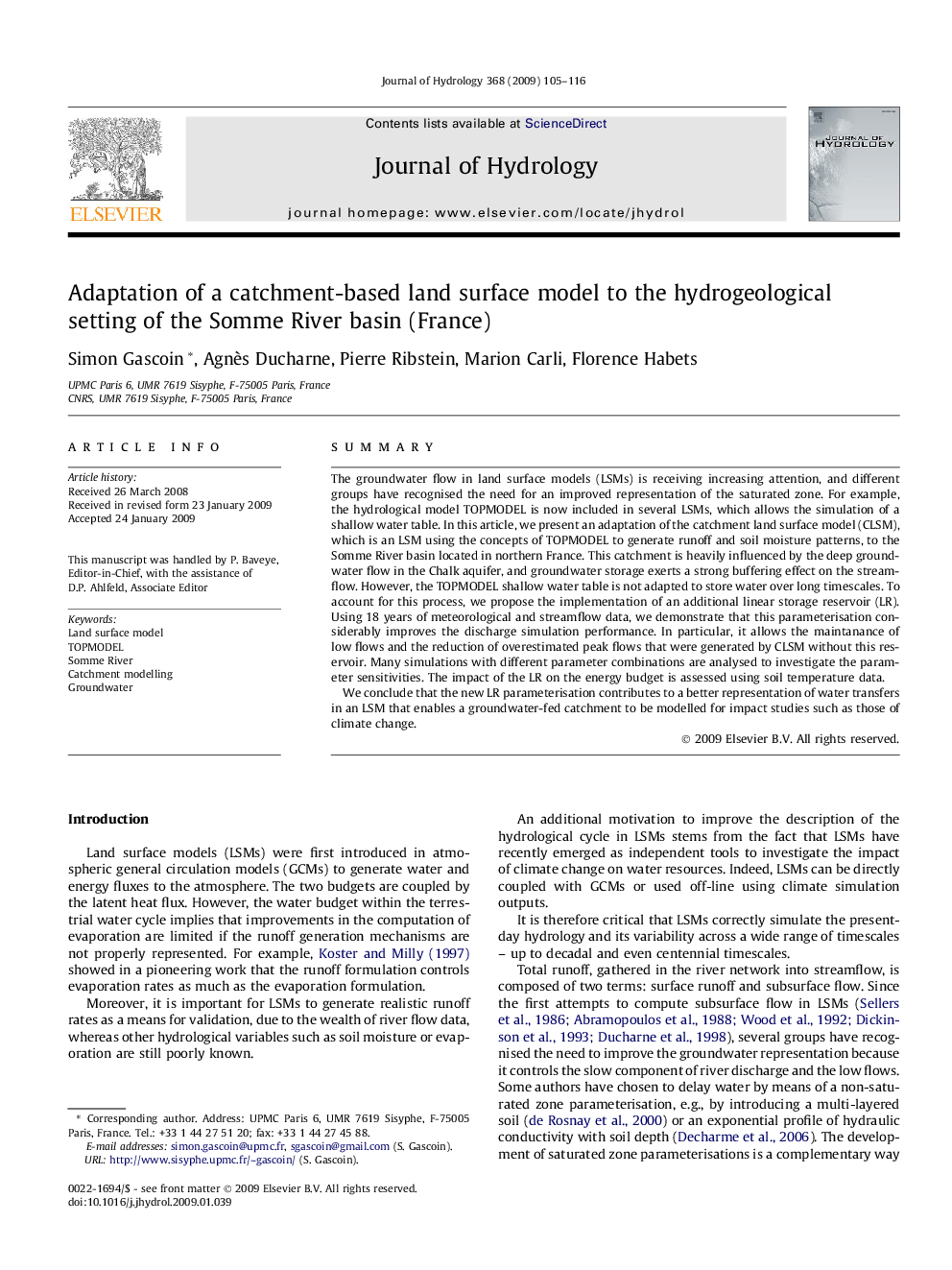| Article ID | Journal | Published Year | Pages | File Type |
|---|---|---|---|---|
| 4579031 | Journal of Hydrology | 2009 | 12 Pages |
SummaryThe groundwater flow in land surface models (LSMs) is receiving increasing attention, and different groups have recognised the need for an improved representation of the saturated zone. For example, the hydrological model TOPMODEL is now included in several LSMs, which allows the simulation of a shallow water table. In this article, we present an adaptation of the catchment land surface model (CLSM), which is an LSM using the concepts of TOPMODEL to generate runoff and soil moisture patterns, to the Somme River basin located in northern France. This catchment is heavily influenced by the deep groundwater flow in the Chalk aquifer, and groundwater storage exerts a strong buffering effect on the streamflow. However, the TOPMODEL shallow water table is not adapted to store water over long timescales. To account for this process, we propose the implementation of an additional linear storage reservoir (LR). Using 18 years of meteorological and streamflow data, we demonstrate that this parameterisation considerably improves the discharge simulation performance. In particular, it allows the maintanance of low flows and the reduction of overestimated peak flows that were generated by CLSM without this reservoir. Many simulations with different parameter combinations are analysed to investigate the parameter sensitivities. The impact of the LR on the energy budget is assessed using soil temperature data.We conclude that the new LR parameterisation contributes to a better representation of water transfers in an LSM that enables a groundwater-fed catchment to be modelled for impact studies such as those of climate change.
